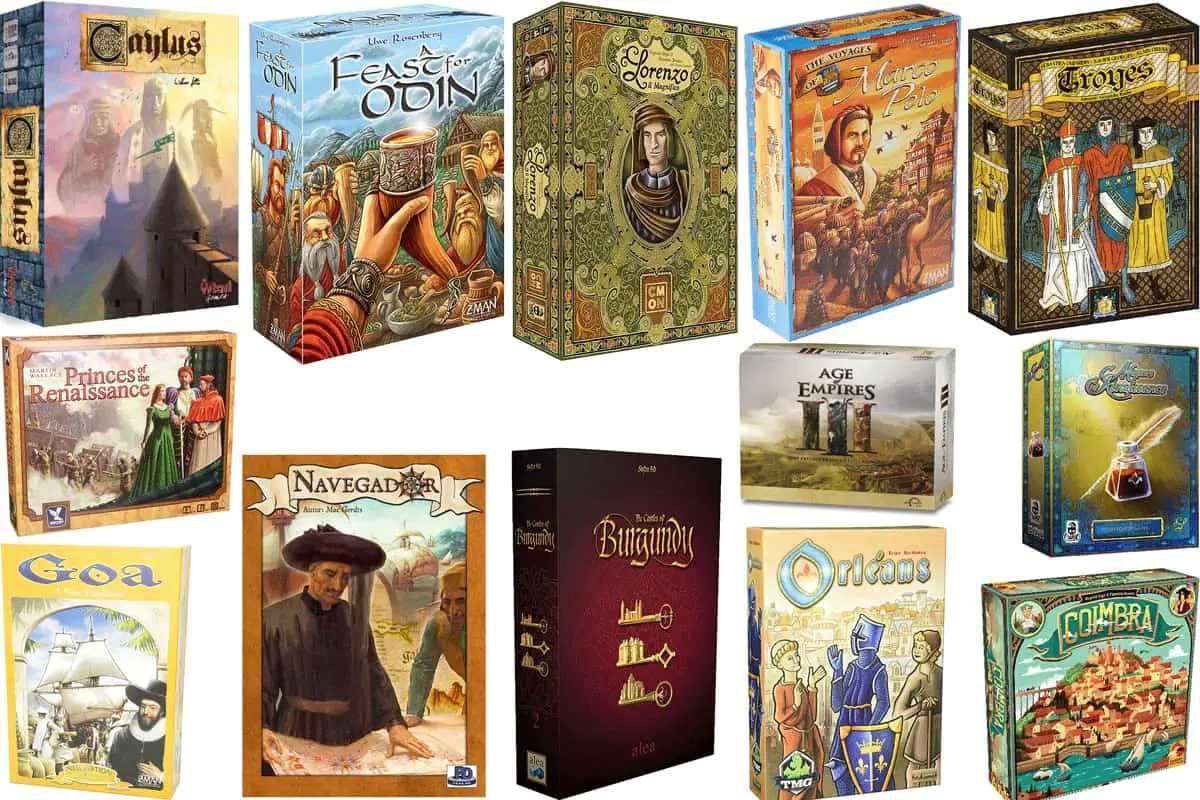This post contains affiliate links.
Medieval and Renaissance times are so rich in history!
I could find 8 medieval-themed board games, and 6 Renaissance-themed games, which are not especially educational as long as the theme is concerned, but which are very solid euro board games, some of them like Orléans, or The Voyages of Marco Polo or Castles of Burgundy being exceptionally good games with outstanding game mechanics. Many of these games also feature great artwork, which also makes them very appealing.
Medieval & Renaissance Board Games Comparison Table
| Game | Theme | Type | Age | Players | Price | Rating |
|---|---|---|---|---|---|---|
| A Feast for Odin | Medieval | Worker placement | 14+ | 1‑4 | $$$$ | ★★★★★ |
| Caylus | Medieval | City building, Worker placement | 13+ | 2‑5 | $$$$$ | ★★★★☆ |
| Goa New Expedition | Medieval | Auction, Exploration, Resource mgt | 14+ | 2‑4 | $$$$ | ★★★★☆ |
| Lorenzo II Magnifico | Medieval | Worker placement | 14+ | 2-4 | $$$ | ★★★☆☆ |
| Orléans | Medieval | Worker placement | 12+ | 2-4 | $$$$$ | ★★★★★ |
| Richard the Lionheart | Medieval | Worker placement | 14+ | 2-6 | $$$ | ★★★★☆ |
| Troyes | Medieval | Worker placement | 14+ | 2-4 | $$$ | ★★★★☆ |
| The Voyages of Marco Polo | Medieval | Economic, Resource management, Dice placement | 13+ | 2‑4 | $$$$ | ★★★★★ |
| Age of Empires III Ages of Discovery | Renaissance | Civilization building, Exploration | 12+ | 2‑5 | $$$$ | ★★☆☆☆ |
| Coimbra | Renaissance | Worker placement, Resource mgt | 14+ | 2‑4 | $$$$ | ★★★★☆ |
| Castles of Burgundy | Renaissance | Territory building | 12+ | 2‑4 | $$$ | ★★★★★ |
| Navegador | Renaissance | Exploration | 12‑16 | 2-5 | $$$$ | ★★★★☆ |
| Masters of Renaissance | Renaissance | Economic, Resource management | 14+ | 1-4 | $$$ | ★★★☆☆ |
| Princes of Renaissance | Renaissance | Auction | 13+ | 3-6 | $$$$ | ★★★☆☆ |
Medieval Times-themed Board Games
Most medieval times-inspired games utilize the following game styles:
- Auction- players bid to obtain the target action or reward
- Economic/ Resource-management– players gather multiple types of goods to build, trade, or convert into something precious in the game
- Worker-placement– players assign and dispatch their team of workers represented by colored cubes, tokens, or meeples to do different actions
A Feast for Odin (Z-Man games)

★★★★★
Gamers | Age 14+ | 1-4 Players | Game Duration: 60 minutes | Author: Uwe Rosenberg
A Feast for Odin is a Viking-themed game for “hard-core gamers” (very complex rules), where players send their workers to hunt, trade, raid, and loot villages to increase their wealth. At the end of each round, they must fill up a table for a feast to feed their tribes.
is a Viking-themed game for “hard-core gamers” (very complex rules), where players send their workers to hunt, trade, raid, and loot villages to increase their wealth. At the end of each round, they must fill up a table for a feast to feed their tribes.
The winner is the player with the most outstanding value of possessions at the end of seven rounds.
It has the reputation of being the most complex worker placement game (60 different actions), and is especially good for playing alone.
I would not recommend it for the educational value of course, but it is a beast and certainly fascinating for worker placement game aficionados!
Caylus (Ystari Games)
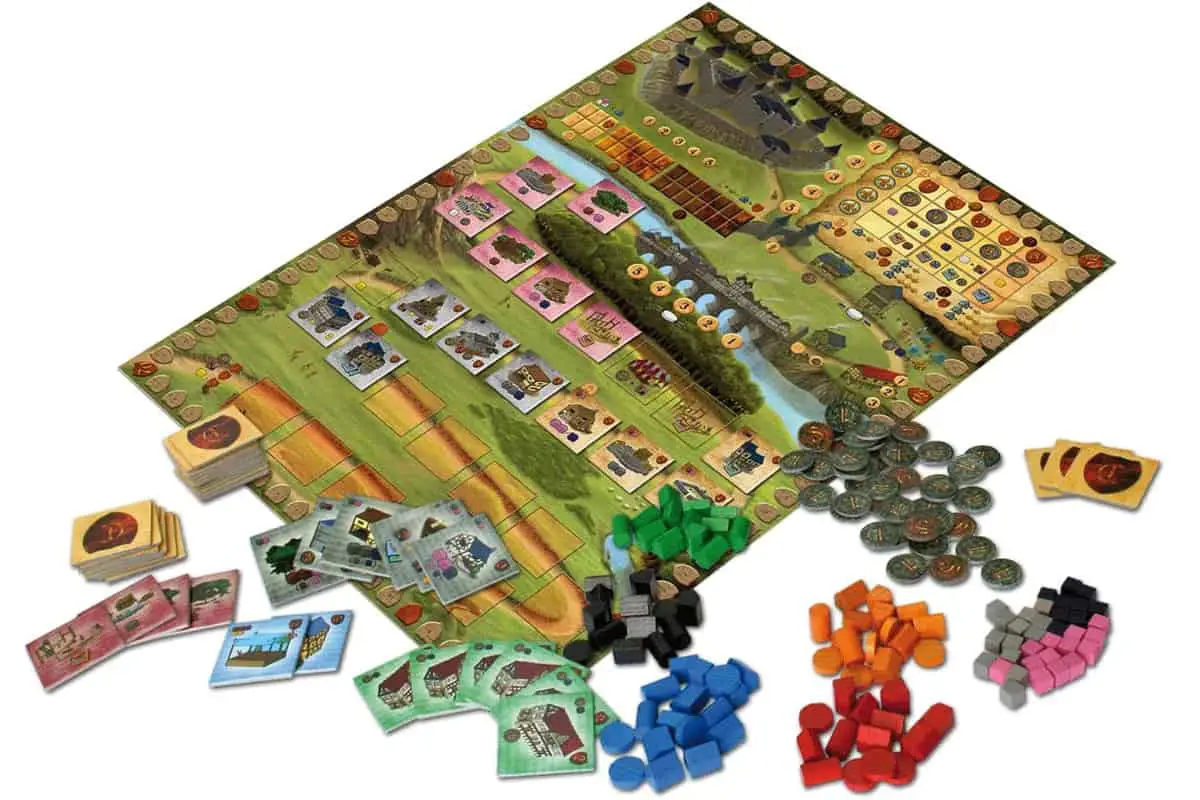
★★★★☆
Gamers | Age 13+ | 2-5 Players | Game Duration: 60-150 minutes | Author: William Attia
Caylus is a 2006 Spiel des Jahres “Complex Game” Winner. It is a strategy game set in 1289 when King Philip the Fair decided to strengthen the borders of France by building a new castle and the city around it.
is a 2006 Spiel des Jahres “Complex Game” Winner. It is a strategy game set in 1289 when King Philip the Fair decided to strengthen the borders of France by building a new castle and the city around it.
Players act as the master builders, and they gain the King’s favor and earn prestige points as they construct the castle and develop the city. The game ends as soon as the castle is completed. The player with the highest prestige points emerges as the winner.
The artwork is really beautiful.
Caylus it is time-consuming and demanding. Players spend 2-3 hours collecting resources, deciding the number and timing of constructing buildings, and tracking the contribution to the King’s castle. But it is enjoyable for real gamers.
By Ryan Metzler
Goa a New Expedition (Z-Man Games)
★★★★☆
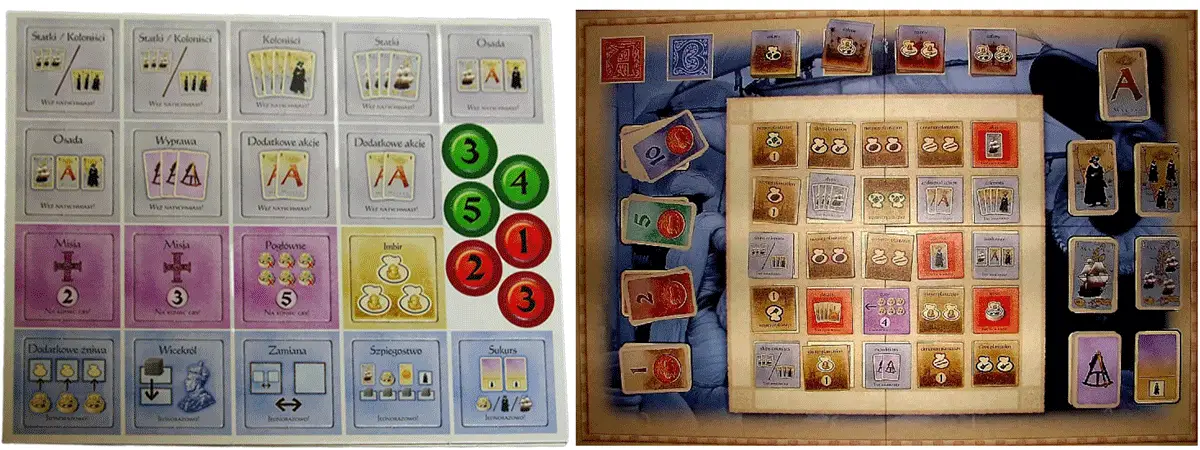
Gamers & Families | Age 12+ | 2-4 Players | Game Duration: 45 minutes | Author: Rudger Dorn
At the end of 15th century, European traders and explorers traveled to the Indian Ocean to acquire the spices of Southeast Asia. Hence, in the Goa Board game ,
, players represent the Portuguese who conquered the province of Goa on the west coast of India. They started buying and selling spices and goods through auctions.
players represent the Portuguese who conquered the province of Goa on the west coast of India. They started buying and selling spices and goods through auctions.
In this strategy game, players can increase their wealth and fame by:
- Enlarging fleet to carry spices and other goods
- Building manufacturing plants
- Levying taxes
- Funding expeditions
- Finding new colonies
Goa is a game with mechanics that really work, providing that you give a lot of thought to your planning in order to win (there are many conflicts of priorities and your ability to make good allocation of your resources is essential).
The history related to the theme is not covered at all in the game, so do not expect to learn anything about history while playing it tough.
By Chairman of the Board
Lorenzo II Magnifico (CMON)

★★★☆☆
Gamers | Age 14+ | 2-4 Players | Game Duration: 60-120 | Authors: Virgilio Gigli, Flaminia Brasini and Simone Luciani
Lorenzo II Magnifico is a worker placement game set in Florence, Italy during the Italian Renaissance.
is a worker placement game set in Florence, Italy during the Italian Renaissance.
It was named after a powerful Italian leader, Lorenzo de Medici. He was famous for sponsoring artists, initiating state reforms, and arbitrating for peace among Italian powers.
Players represent noble families that compete in prestige and fame. They collect victory, military, and faith points by assigning their family members to:
- Gather resources composed of wood, stone, servants, and coins
- Obtain development cards
- Pay tribute to the church
Lorenzo II Magnifico is a balanced game, making it unpredictable and interesting to play. Players need to make important decisions such as what cards to purchase, what resources to get, workers they need, avoid being tagged as “excommunicado” (excommunicated)… It is a long game though, suited for gamers, and there is no attempt at providing any education about that historical period.
CMON Lorenzo II Magnifico.
Orléans (TMG)
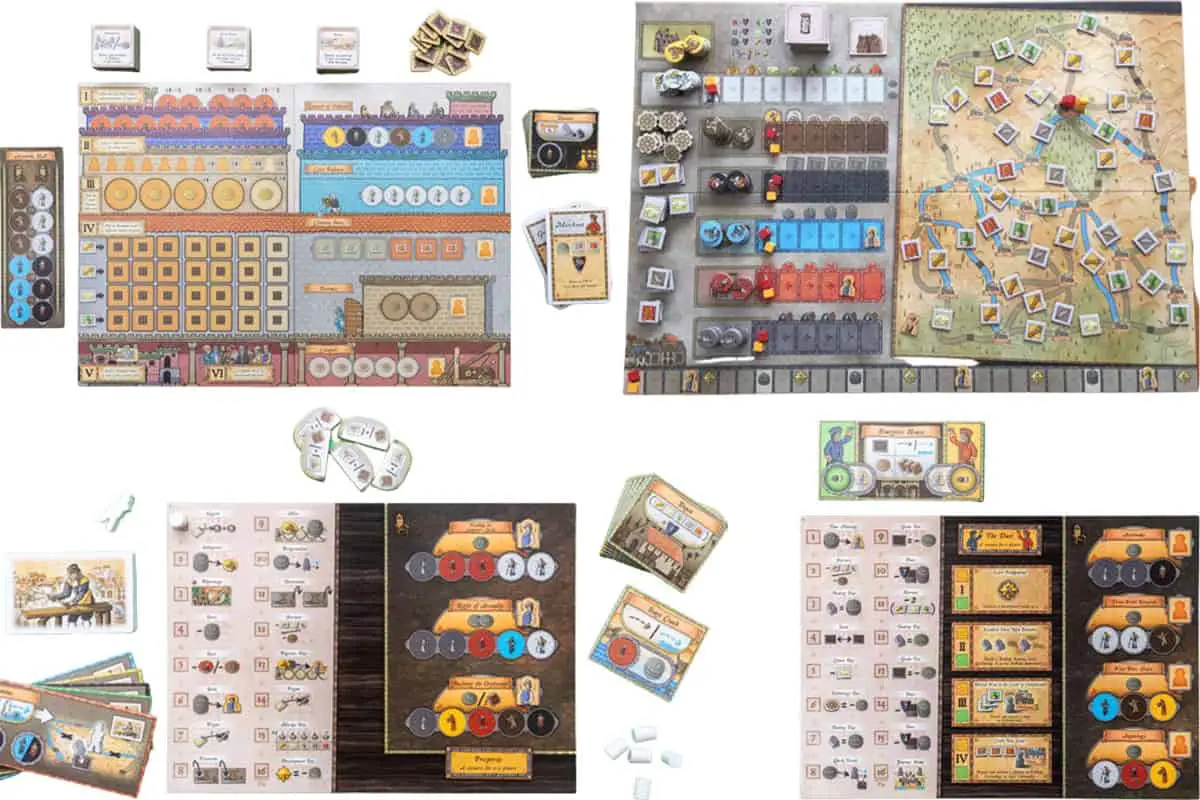
★★★★★
Gamers | Age 12+ | 2-4 Players | Game Duration: 90-120 minutes | Author: Reiner Stockhausen
Orléans is set in the medieval town of Orleans in the Loire region in France.
is set in the medieval town of Orleans in the Loire region in France.
At the start of the game, each player gets four workers of different types (farmers, merchants, knights, monks, etc.) and later recruits more. These worker types have different abilities.
Players try to become dominant through trade, construction, and science, using their workers.
The very interesting point of Orléans is that the game mechanics make many different strategies possible, and none of them seems to be a dominant one. This extreme strategic richness makes it a game that can be replayed many times, and where you can really be creative, try new strategies, and progress.
Do not expect to learn anything about history there though, but it is a really geat game.

by Tom Vasel
Richard the Lionheart (CMON)
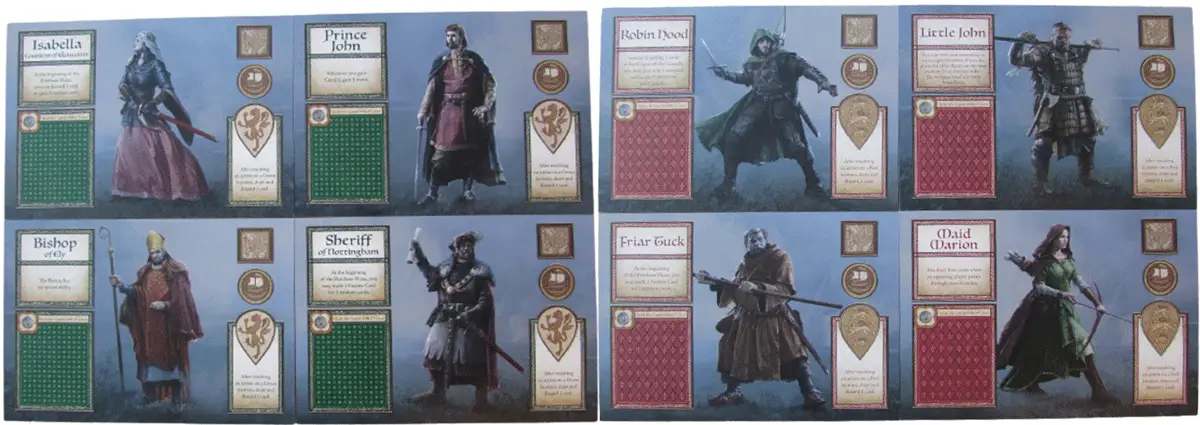
★★★★☆
Gamers | Age 14+ | 2-6 Players | Game Duration: 60 minutes | Author: Andrea Chiarvesio
Richard the Lionheart is set during the times of the Crusades, following the story of King Richard who was summoned to join the Crusade in the Middle East. Because of this, England faced trouble when Prince John Lackland usurped power and was challenged by Robinhood.
is set during the times of the Crusades, following the story of King Richard who was summoned to join the Crusade in the Middle East. Because of this, England faced trouble when Prince John Lackland usurped power and was challenged by Robinhood.
Players must choose whether to take the side of Robinhood or become Prince John’s ally. One must win the battle before the King returns from the Crusades.
This game is semi-cooperative worker placement game where players score team points and individual prestige points.
This semi-cooperative aspect makes it interesting as it is innovative, but a bit strange as you can ruin another player’s game, even if it is not clearly linked to the theme.
Players adjust their moves according to these four tracks:
- King’s path – progress of the King’s Crusade against Saladin’s army in the Holy Land
- Saladin’s path- monitors the success of Saladin
- King’s return to England
- King’s Treasury
By Tom Vasel
Troyes (Pearl Games)
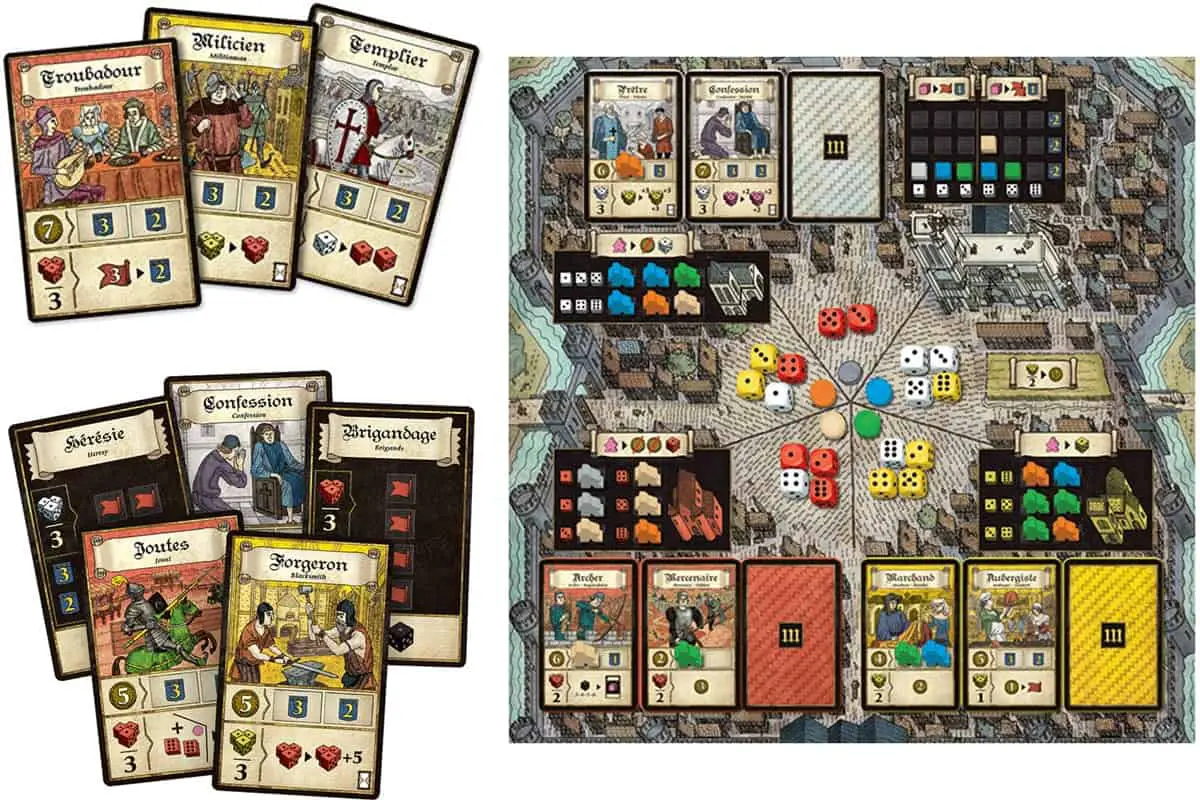
★★★★☆
Families & Gamers | Age 14+ | 2-4 Players | Game Duration: 90 minutes | Authors: S. Dujardin, X. Georges, and A. Orban
Troyes works in similar vein with Lorenzo II Magnifico
works in similar vein with Lorenzo II Magnifico . However, this game takes place in Champagne, France.
. However, this game takes place in Champagne, France.
Players represent powerful families and use dice drafting to assemble workers. They are assigned to increase their influence or fame in three domains: religion, military, and civil.
Players score points for:
- Building cathedral
- Defending the city from invaders
- Sending citizens to three principal buildings (city hall, bishopric and palace)
The player who has scored the highest victory points is the winner.
The hidden end-game scoring conditions of character cards make the game stimulating and surprising.
Troyes has excellent artwork. Players are introduced to prominent figures of that period, who is cool (Chretien de Troyes, Urbain IV, Thibaut II, Hugues de Payns, Le Florentin, Henry I).
This video provides a game overview of Troyes.
By Ryan Metzler
The Voyages of Marco Polo (Z-Man Games)
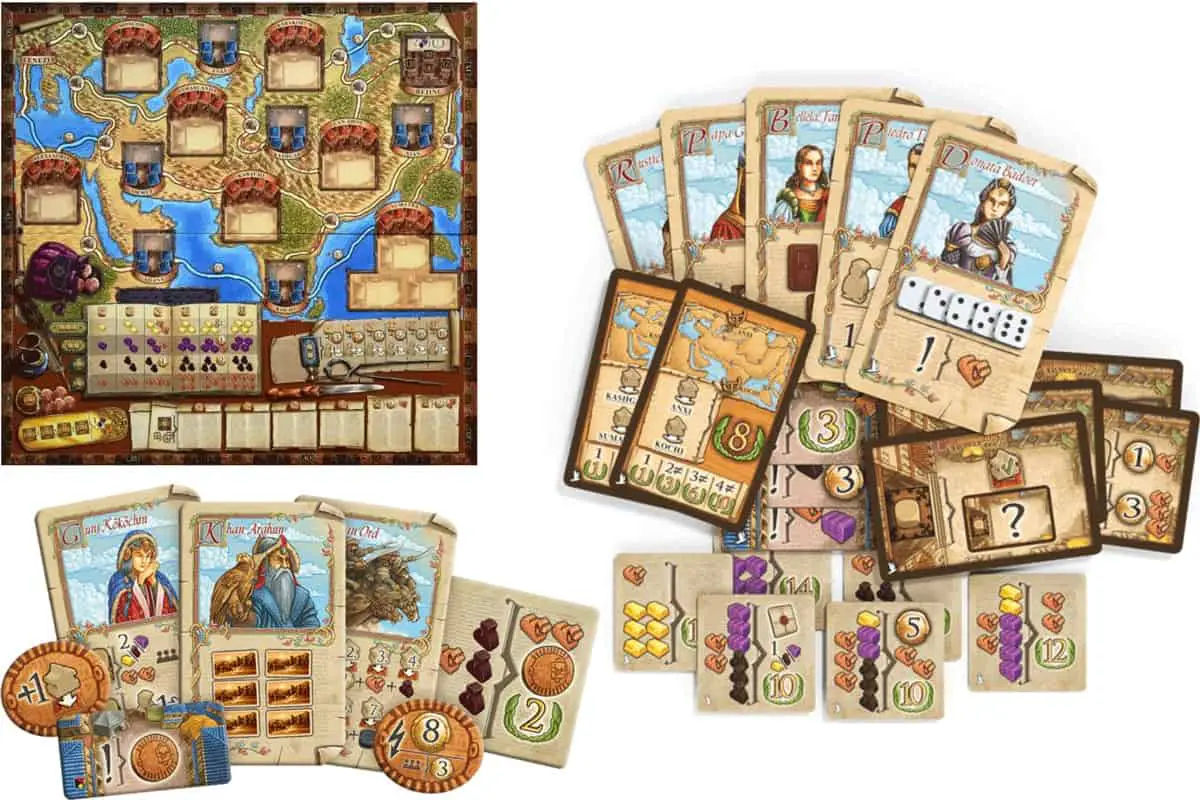
★★★★★
Gamers | Age 13-18 | 2-4 Players | Game Duration: 1-2 hours | Authors: Daniele Tascini and Simone Luciani
The travels of Marco Polo to the east at the end of the 13th century have played an important role in the understanding in Europe of what was happening in Asia at the time. The Voyages of Marco Polo is inspired by the “most famous of all travelers”.
is inspired by the “most famous of all travelers”.
In this dice drafting worker placement game, players act as traders that travel to cities to collect victory points while managing resources.
Players choose among real historical characters and use their special abilities to fulfill trade contracts and establish commercial routes (Marco Polo, Kublai Khan, Wilhelm von Rubruck, Raschid ad-Din Sinan…)
I like that the special abilities of the character cards make the game more unpredictable and competitive. It allows multiple players to occupy posts at the same time.
And it is a great game in the “dice placement” category, so gamers who can spend the time and the effort will love it.
Renaissance-themed Board Games
Ages of Empires III Ages of Discovery (Tropical Games)

★★☆☆☆
Gamers | Age 12+ | 2-5 Players | Game Duration: 2-3 hours | Author: Glenn Drover
Ages of Empires III Ages of Discovery is a worker placement game composed of three Ages where each Age represents about 100 years. At the start of the game, players assume the role of colonists. There are 5 types of workers: Colonists, Captains, Merchants, Missionaries & Soldiers.
is a worker placement game composed of three Ages where each Age represents about 100 years. At the start of the game, players assume the role of colonists. There are 5 types of workers: Colonists, Captains, Merchants, Missionaries & Soldiers.
I like that there are different paths to victory such as Engaging in War, Developing economic power, Investing in research or discovery, Forming alliances.
Unfortunately, the rules are complicated, and it takes about 2-3 hours to finish.
Coimbra (Plan B Games)
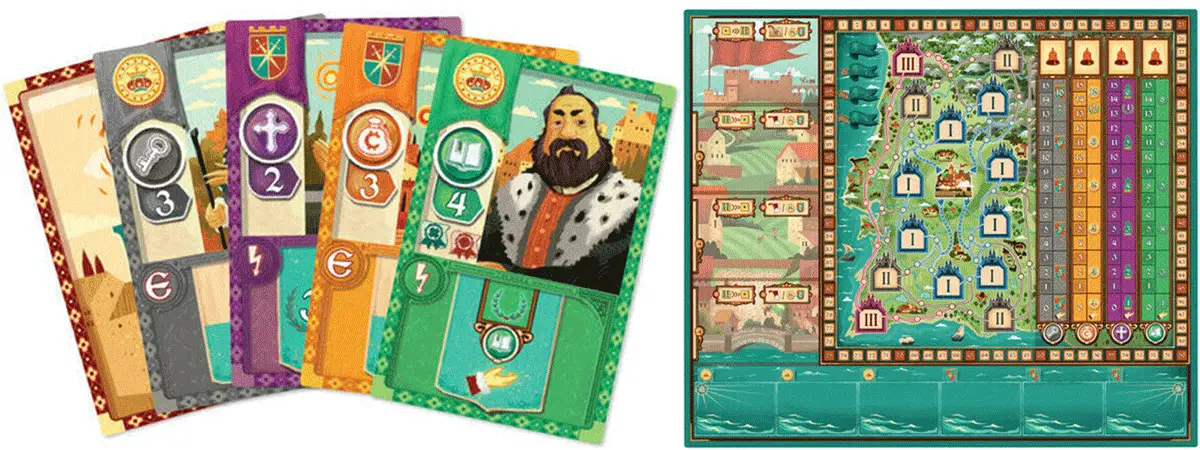
★★★★☆
Gamers | Age 14+ | 2-4 Players | Game duration: 75-120 minutes | Authors: Virginio Gigli and Flaminia Brasini
Players will learn how the three cities in Portugal thrived in the Age of Discovery in Coimbra. This dice-drafting game features Lisbon, Porto, and Coimbra.
This dice-drafting game features Lisbon, Porto, and Coimbra.
This strategy game consists of four rounds, and each round has six phases. The player with the highest score after four rounds is the winner.
Players earn points by:
- Hiring influential citizens composed of clerics, council members, merchants, and scholars
- Visiting monasteries
- Investing in long-term voyages
A very appealing aspect of Coimbra is that players can pursue different goals & strategies in each game session, so the experience is unique. The components are attractive as well.
by Tom Vasel
Castles of Burgundy (Alea-Ravensburger)

★★★★★
Families & Gamers | Age 12+ | 2-4 Players | Game Duration: 30-90 minutes | Author: Stefan Feld
Castles of Burgundy is considered one of the most predominant board games over the last 10 years.
is considered one of the most predominant board games over the last 10 years.
In this classic Eurogame, players assume the role of an influential prince in 15th Century France. He aims to develop the best fiefdom in the Burgundy region.
The game’s object is to score the highest total of victory points at the end of the fifth round of the fifth phase. Victory points are earned from different types of tiles:
- Green pasture tiles are good for collecting points from farm animals.
- Brown building tiles provide end-game points.
- Dark-green castle tiles give players immediate benefits.
- Silver mines generate income tokens that can be used to purchase tiles from the market.
Castles of Burgundy has so much success because it is very balanced, with many different possible strategies and actions, and it is also very good when played by two players, which is rare. It is also rather accessible – the rule is really not so long.
I like that there are many opportunities to win – winning depends on a combination of luck in dice rolling and strategy.
The theme is not really related to the game mechanics though, this might be a little confusing but does not change anything to the fact that Burgundy is an excellent game.
Navegador (PD Verlag)

★★★★☆
Gamers | Age 12-16 | 2-5 Players | Game Duration: 60-90 minutes | Author: Mac Gerdts
Another game that features Portugal in the 15th –16th century is Navegador .
.
In this worker placement game, the workers are placed in Lisboa to earn money that will be used for plenty of actions and earn as many victory points as possible.
Players select an action using a wheel:
- Controlling colonies
- Building factories, shipyards, and churches
- Trading at the market
- Sailing (players must avoid dangerous sea regions)
- Assigning workers
- Collecting privileges
Navegador is composed of 3 phases in one turn:
- In phase I, players explore Cabo ed Boa de Esperanza.
- In phase II, players enter Malaca.
- In phase III, players explore all regions.
Each player can recruit 2-9 workers. The first worker can be acquired for 50 cruzados (currency in the game), increasing each phase. If the player sells 9 workers, each worker is worth 100 cruzados.
When players purchase a worker, they must pay the bank. Once they own a worker, they have access to collecting income called privileges.
The privilege tokens are classified as follows:
- 6 colony privileges
- 6 factory privileges
- 6 explorer privileges
- 6 shipyard privileges
- 6 church privileges
- 5 king’s privileges
Earning 200 cruzados is equal to 1 extra victory point.
On the other hand, ships cost 50 cruzados each, but players can own a maximum of 7 ships. When the bank runs out of money, the King’s privileges can be used as a substitute.
This game features a convincing simulation of navigation and trading in the 15th century.
The turns are fast because of the rondel system. Thus, it has reasonable game duration of 60-90 minutes, and there are different strategies to try out in each session.
and reviews it “without pants”
Masters of Renaissance (Cranio Creations)
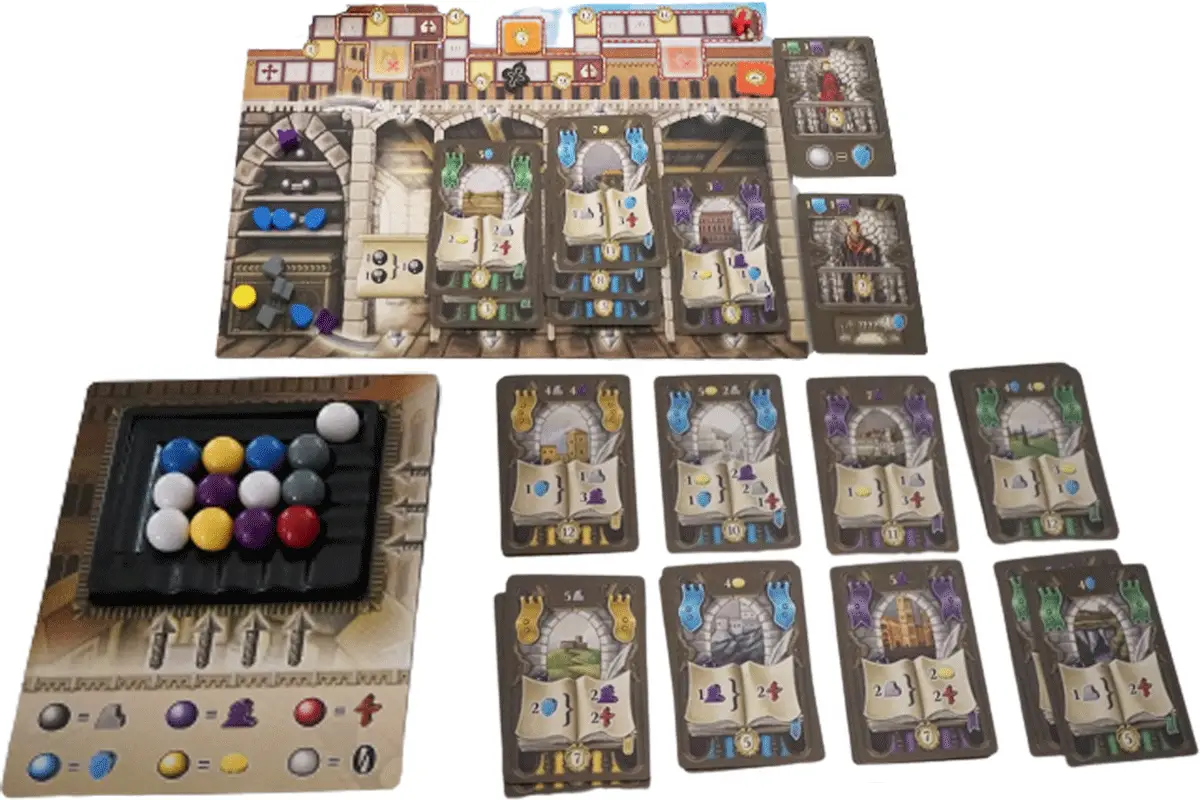
★★★☆☆
Gamers & Families | Age 14+ | 1-4 Players | Game Duration: 30-60 minutes | Authors: Simone Luciani and Nestore Mangone
Masters of Renaissance: Lorenzo Il Magnifico has similarities with Lorenzo II Magnifico.
has similarities with Lorenzo II Magnifico. which include:
which include:
- Artwork
- a historical theme where players act as leaders of noble families that compete for fame and prestige in Florence, Italy
- Its main mechanics is similar to the rules in the advanced gameplay of Lorenzo il Magnifico
The unique feature of this game is the use of a marble tray. It contains 13 color-coded marbles that correspond to a particular resource:
- Grey-stone
- Blue– shields
- Purple– servant
- Yellow– coins
- White– none
- Red– faith point (not a tangible resource, instead, the player moves one space forward in the faith tracker)
There are three principal actions:
- Get a resource from the market
- Activate production
- Purchase development cards
The game is over if:
- A player reaches the last space of the Faith track
- A player purchases their 7th development card
I recommend Masters of Renaissance because it is easy to teach and play, and it can be enjoyed in solo mode.
by Tom Vasel
Princes of the Renaissance (Mercury Games)
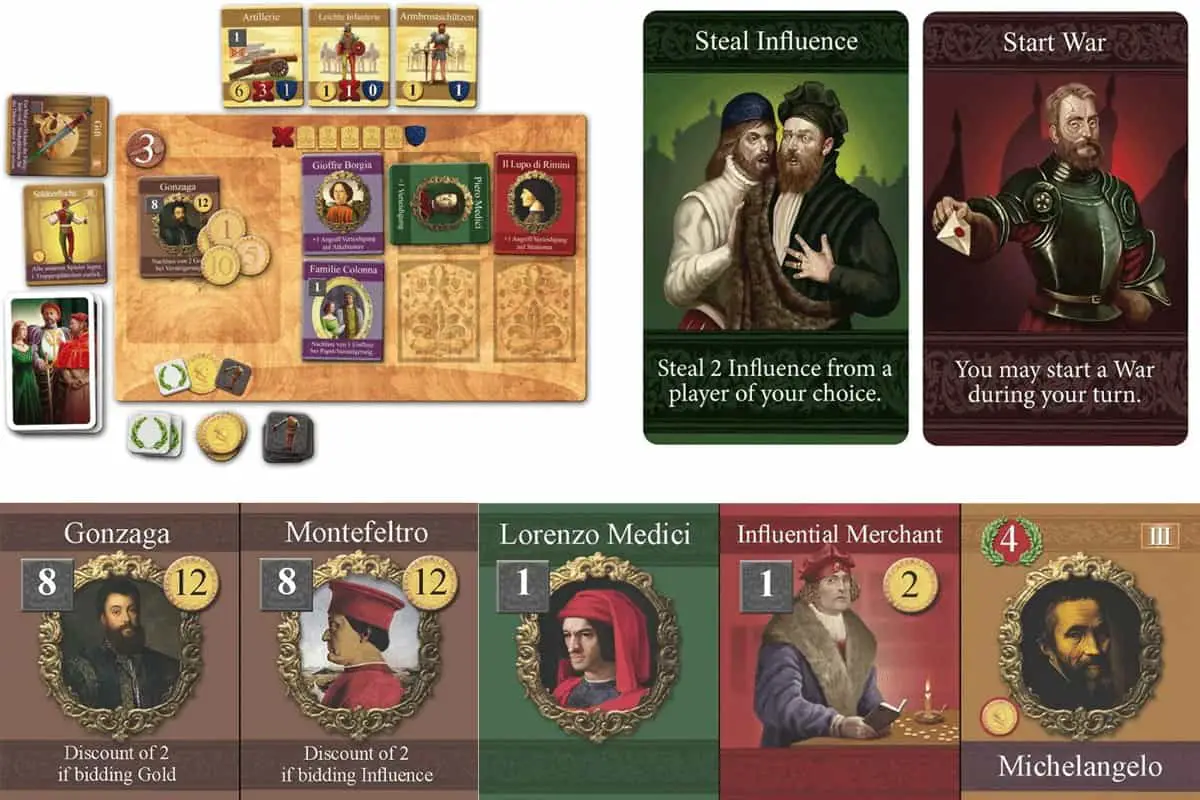
★★★☆☆
For Gamers | Age 13+ | 3-6 Players | Playtime: 3 hours | Author: Martin Wallace
Princes of the Renaissance is an auction-driven war game set in Renaissance Italy.
is an auction-driven war game set in Renaissance Italy.
This game honors two kinds of currency: gold and influence.
Players represent the heads of influential families that compete for prestige in five major cities: Florence, Milan, Naples, Rome, and Venice.
This game is composed of three decades, and the main flow of action includes:
- Purchasing troop or treachery card
- Auction a city tile, event tile, or pope tile
- Wage a war
- Skip a turn (optional)
To win in the game, players must pay attention to the tiles they invest in at the end of each decade. At the end of the third decade, the player with the most victory points shall be declared the winner.
This game encourages cooperative play. However, some actions involve treachery such as:
- Troops can be bribed not to participate in the battle
- The pope can be bribed as well since they are used as a deciding factor in wars
- Players can steal influence, freeze bids and raid the gold
- End War or start an additional war
Other Types of History Games
This site contains several other history games. You might want to check my posts:
- 5 Board Games That Teach History

- 6 History-themed War Games

- 14 American History Card Games and Flash Cards for Families and Schools

- 18 Card Games That Teach World History for Families and Schools

- 7 Art History Board Games for School and Home

- 20 Memory Games To Teach Art and Art History

Edudingo.com is a participant in the Amazon Services LLC Associates Program, an affiliate advertising program designed to provide a means for sites to earn advertising fees by advertising and linking to Amazon.com. We also participate in other affiliate programs which compensate us for referring traffic.

